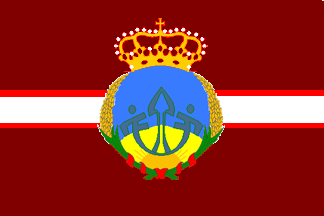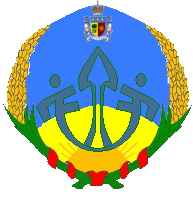Modan-lach

|
[[Image:{{{coat of arms}}}|100px]] |
| Feudal Status: | County |
| Capital: | Brookshire Hamlet |
| Largest Cities: | Eriksburg, Raynor Point |
|
| |
| Local Leadership Title: | Count of Modan-Lach |
| Local Government: | Fedual, Dictatorship |
| Current leader: | Maksym Hadjimehmetov |
|
| |
| Local language: | English, Laqi |
| Local Religion: | Cedrism, Buddhist, Matbaic Orthodox & Jewish Minorities |
County Arms
Introduction
'Behold Modan Lach! The Land of Fences and Gates!
The Land of Giant Sea Serpents!
The Land of the Freemen of the seas!'
Jan Wolvin I, 1st Count of Modan Lach
Modan-Lach is perhaps most famed for containing the capital of Brookshire and the Barony of K'Tzuni, Brookshire Hamlet. A subdivision of Brookshire, Modan-Lach is located in Southern Benacia, bordering the counties of Alexandretta, lywind, Crestfall Downs, and the Holy Lands of Shireroth (Naudia'Diva).
Consisting of mainly low-lying coastal land with flat topped hills in the South, the County contains an archipelago of islands and peninsula jutting into the Khaz Modan Gulf and Shire Sea. Thus, is is a nautical county with a large overseas trade business and shipbuilding industry.
Traditionally the county has been divided by its natives into Upper Lach and Lower Lach. Though both Laqi regions of the county, Upper Lach is the more remote and mountainous area and much less industrialised.
History
Modan-Lach as a county remained long dormant and relatively undeveloped until its first count, Jan Wolvin I, moved in and became the first Count of Modan-Lach in late August 2006, quickly stating that he wished to implement a culture similar to that of Frank Herbert's Dune books.
Wolvin then attempted to initiate a Theocracy in the Raynor Islands, part of the County, but was stopped in his tracks by Greg Russell, who declared him an Anti-Cedrist heretic.
The rest of Wolvin's reign was relatively uneventful, and he became inactive as count around February 2007.
In November 2007, Maksym Hadjimehmetov was proclaimed 2nd Count of Modan-Lach, a position he still holds at present.
Culture
Essentially, Modan-Lach’s culture is a unique one, containing elements of Earth’s Mongol and Caucasian cultures, its language including elements of Turkic, Basque, and Kartvelian languages. In this, Lach-Modanian rule has traditionally functioned in a feudal system led by the Count, known traditionally by a Laqi Countal name, which is bestowed on people the leadership of Lach-Modan deem worthy. For example, although the current count’s name is Maksym Hadjimehmetov, many Modanians would refer to him respectively as simply Maksymbattur.
Modan-Lach is mainly Laqi, the culture comprising some 87% of the population, with the rest including other Shirereithan peoples such as Yardistani and Hyperborean. Small immigrant communities from other micronations also exist, as well as a Jewish community in Brookshire Hamlet. The Laqi people, to whom the county gives its name, were for many years very warlike but developed into an artisan culture some four hundred years ago, building magnificent temples and palaces all around the peninsula from which the culture derived.
The name Modan-Lach is an amalgamation of Modan from the defunct Khaz Modanian Empire which once ruled these lands, and of the Laqi people who now inhabit it. Therefore, the actual inhabitants are referred to collectively as Modanians, irrespective of their individual culture, though the majority of people in the county are of Laqi ethnicity.
Laqi music is very unique, and employs mainly a stringed instrument similar to a sitar called a nanaida. Other popular instruments are the Xivruloj (pronounced ‘Chivrooloy’), and xaxuni (pronounced ‘Chachuni’), a smaller nanaida, similar to a Russian Balalaika, and a large tambourine respectively. Many of these instruments are used in traditional Laqi weddings, funerals, and festivals. Laqi music employs a style of singing known as Mskori, which is a lively, fast-tempo music thought of as very jovial and festive.
Hence, Mskori is a very popular style of music and one of the main fames of Modan-Lach. Festivities such as Modanaarli (Modan-day) celebrate the Khaz-Modanian Empire and its achievements, and include fasting throughout the day followed by a huge all-night feast held in town squares with music, games and dancing. More popular in rural areas and perhaps one of the Laqis’ best known secrets is the autumn festival of Xivejde (pronounced ‘Chiveydeh’), which is essentially a sports festival- this includes horse archery and wrestling, as well as the usual vast Laqi feasts. During Xivejde, the local people compete for the title of local champion, who retains the title until the next festival the following year. It is not normal for people to be killed in these games, which can turn out to be quite violent. But as the Laqi say, if it’s a laugh, it’s all worth it in the end.
The festival is usually held in a field outside the city or town, and people stay in traditional round tents- similar to yurts- to watch the three day games of the festival. Other Shirereithan and Cedrist festivals are observed in the normal manner, unless fasting is involved. The Laqi obsession with horses is something which makes them the fierce warriors they are. Almost every Laqi child is brought up to ride a horse from a very young age and the backbone of most Laqi militia has always been its strong cavalry regiments. Popular ornaments include highly decorative saddles- traditionally; the wealth of a man was measured by the beauty of his horse’s saddle. This later grew into the colourful carpets and pashminas sold in all the markets which originally derive from the mystic runes left over in the Khaz-Modanian ruins. Although the Laqi generally do believe that these ruins are haunted, many symbols which have become synonymous with the county were originally markings found on these ruins, such as the mysterious anchor-rune in the county’s coat of arms. This was originally found submerged in unidentified ruins off the Southern Modan-Lach coast.
The last thing it is easy to be in Modan-Lach is vegetarian. The Laqi have an incredible capacity for meat and meaty dishes, beef and lamb being the favourites. Because Lach-Modan was always open to trade from other nations due to its locations, it was always on the Micran spice route and as a result many dishes are incredibly spicy. The staple crop is corn, and cornbread is eaten with most meals, along with a range of chutneys and jams.
Breakfast, for example, would consist of bread with meats or cheese with olives and sometimes a dish of a spicy porridge with apple. The most substantial meal is eaten in the evening and it is not unusual for meals to go on past midnight. The county poison is Tөrvaj (pronounced ‘Törvay’), a kind of distilled ginger and apple cider flavoured of cinnamon and other spices. Similar to mulled wine or brandy, this is drunk in large quantities. The most popular non-alcoholic drink is buttered tea, similar to the tea drunk in Tibet or Nepal. It is highly spicy and thick, ‘broadening the horizons as well as the cholesterol count’, as a local saying goes.
